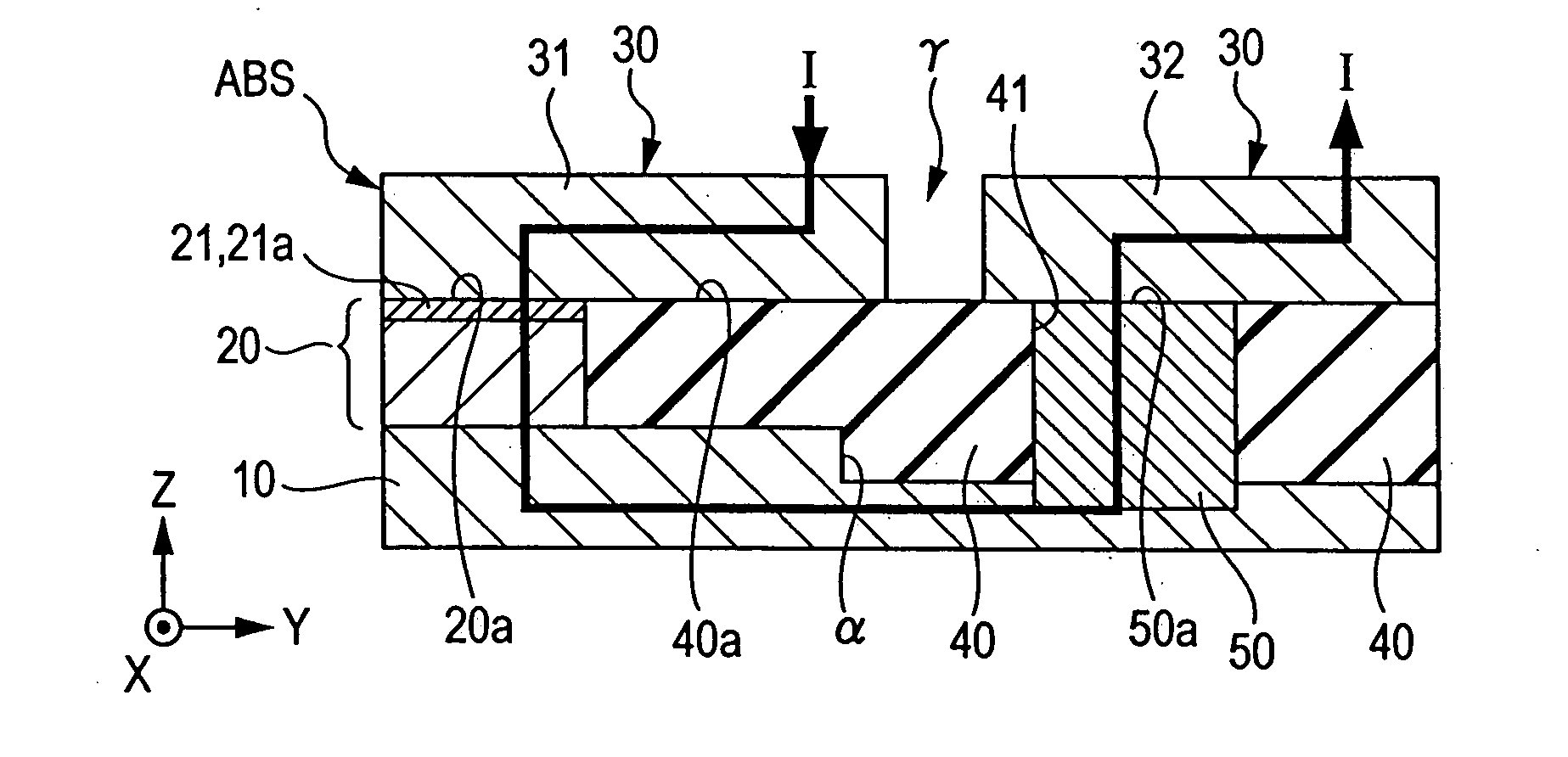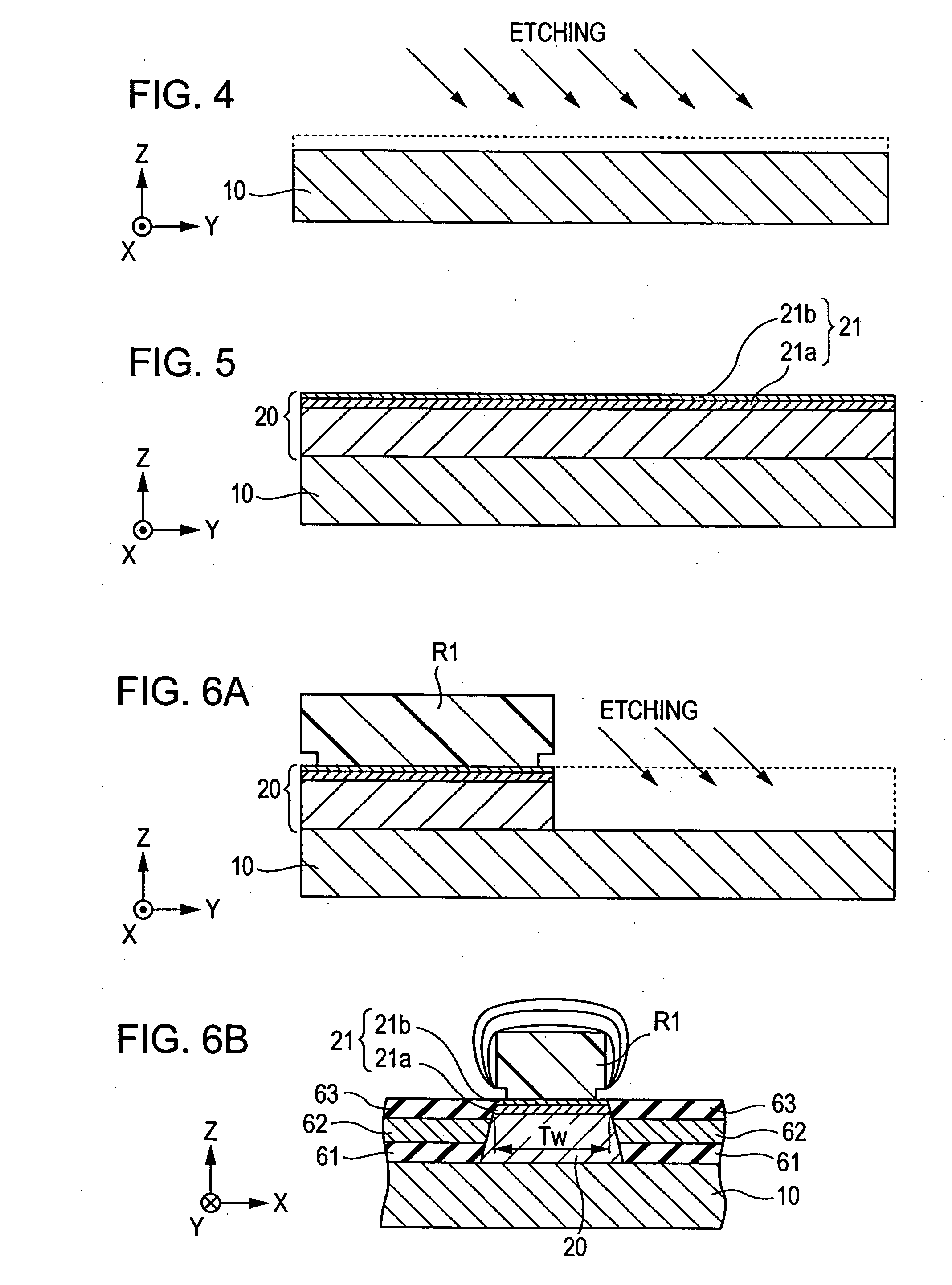[0008] In view of the problem described above, the present invention has been accomplished. It is an object of the present invention to provide a CPP thin-film magnetic head capable of reducing
noise of an element output, reducing a resistance that does not contribute to the element output, avoiding damage to the thin-film magnetic head element due to
etching, and advantageously reducing an interval between the shield
layers, and to provide a method for producing the CPP thin-film magnetic head.
[0011] According to an embodiment, the second top shield sublayer is not in directly contact with the bottom shield layer. The top surface of the
metal layer that conductively connects the second top shield sublayer with the bottom shield layer is the contact surface with the second top shield sublayer. Thus, the
surface oxide layer on the bottom shield layer and the
surface oxide layer on the thin-film magnetic head element can be removed in separate steps. Consequently, it is possible to completely remove the surface
oxide layers on the thin-film magnetic head element and the bottom shield layer in the minimum amount of
etching without causing damage to the thin-film magnetic head element.
[0013] The size of the metal layer in the track width direction is preferably greater than that of the thin-film magnetic head element in the track width direction. Since this metal layer functions as an
electrode together with the bottom shield layer and the second top shield layer, the resistance of the entire
electrode can be reduced because of large area thereof.
[0017] According to the embodiment described above, the step of removing the surface
oxide layer on the bottom shield layer exposed in the space for forming a hole and the step of the surface
oxide layer on the thin-film magnetic head element are performed separately, it is possible to surely remove the surface oxide
layers on the thin-film magnetic head element and the bottom shield layer without causing damage to the thin-film magnetic head element. Moreover, since the surface oxide layer on the thin-film magnetic head element can be removed in the minimum amount of etching, there in no need to provide a thick cap layer, which is the uppermost layer of the thin-film magnetic head element. This is advantageous in reducing the interval between the shield layers. Since no oxide layer is present in the current path through the thin-film magnetic head element, a resistance that does not contribute to the element output and the output
noise of the element due to a change in the resistance are reduced.
[0019] The uppermost layer of the thin-film magnetic head element is preferably formed of a cap layer having a laminate structure containing a
ruthenium film and a
tantalum film. Then, in the step of removing the surface oxide layer on the metal layer, the
tantalum film of the cap layer being completely removed to
expose the
ruthenium film, and then the first top shield sublayer being formed on the
ruthenium film. To suppress the amount of etching for removing the surface oxide layer, the cap layer is preferably composed of a material, for example, ruthenium, having
oxidation resistance. However, when ruthenium material is exposed at the top surface of the cap layer,
photolithography is insufficiently performed. Thus, a
tantalum film capable of being suitably processed by
photolithography is stacked on the ruthenium film. Then, immediately before forming the first top shield sublayer, the tantalum film is completely removed.
[0020] The present invention provides a CPP thin-film magnetic head capable of reducing output
noise of the element, reducing a resistance that does not contribute to the element output, avoiding damage to the thin-film magnetic head element due to etching, and advantageously reducing an interval between the shield layers, and provides a method for producing the CPP thin-film magnetic head.
 Login to View More
Login to View More 


